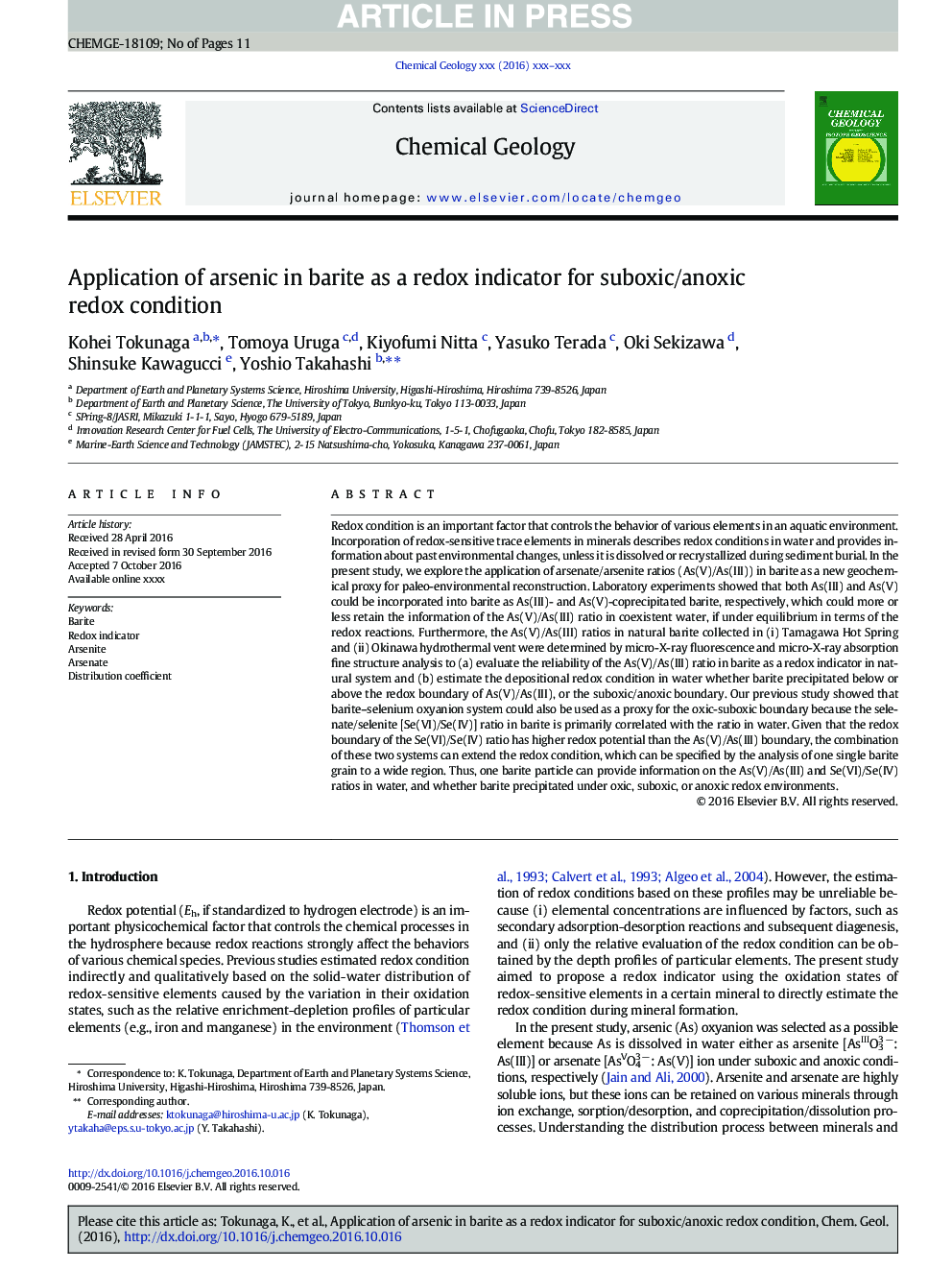| Article ID | Journal | Published Year | Pages | File Type |
|---|---|---|---|---|
| 5782981 | Chemical Geology | 2016 | 11 Pages |
Abstract
Redox condition is an important factor that controls the behavior of various elements in an aquatic environment. Incorporation of redox-sensitive trace elements in minerals describes redox conditions in water and provides information about past environmental changes, unless it is dissolved or recrystallized during sediment burial. In the present study, we explore the application of arsenate/arsenite ratios (As(V)/As(III)) in barite as a new geochemical proxy for paleo-environmental reconstruction. Laboratory experiments showed that both As(III) and As(V) could be incorporated into barite as As(III)- and As(V)-coprecipitated barite, respectively, which could more or less retain the information of the As(V)/As(III) ratio in coexistent water, if under equilibrium in terms of the redox reactions. Furthermore, the As(V)/As(III) ratios in natural barite collected in (i) Tamagawa Hot Spring and (ii) Okinawa hydrothermal vent were determined by micro-X-ray fluorescence and micro-X-ray absorption fine structure analysis to (a) evaluate the reliability of the As(V)/As(III) ratio in barite as a redox indicator in natural system and (b) estimate the depositional redox condition in water whether barite precipitated below or above the redox boundary of As(V)/As(III), or the suboxic/anoxic boundary. Our previous study showed that barite-selenium oxyanion system could also be used as a proxy for the oxic-suboxic boundary because the selenate/selenite [Se(VI)/Se(IV)] ratio in barite is primarily correlated with the ratio in water. Given that the redox boundary of the Se(VI)/Se(IV) ratio has higher redox potential than the As(V)/As(III) boundary, the combination of these two systems can extend the redox condition, which can be specified by the analysis of one single barite grain to a wide region. Thus, one barite particle can provide information on the As(V)/As(III) and Se(VI)/Se(IV) ratios in water, and whether barite precipitated under oxic, suboxic, or anoxic redox environments.
Related Topics
Physical Sciences and Engineering
Earth and Planetary Sciences
Geochemistry and Petrology
Authors
Kohei Tokunaga, Tomoya Uruga, Kiyofumi Nitta, Yasuko Terada, Oki Sekizawa, Shinsuke Kawagucci, Yoshio Takahashi,
